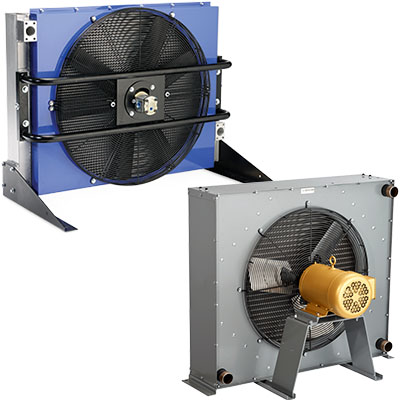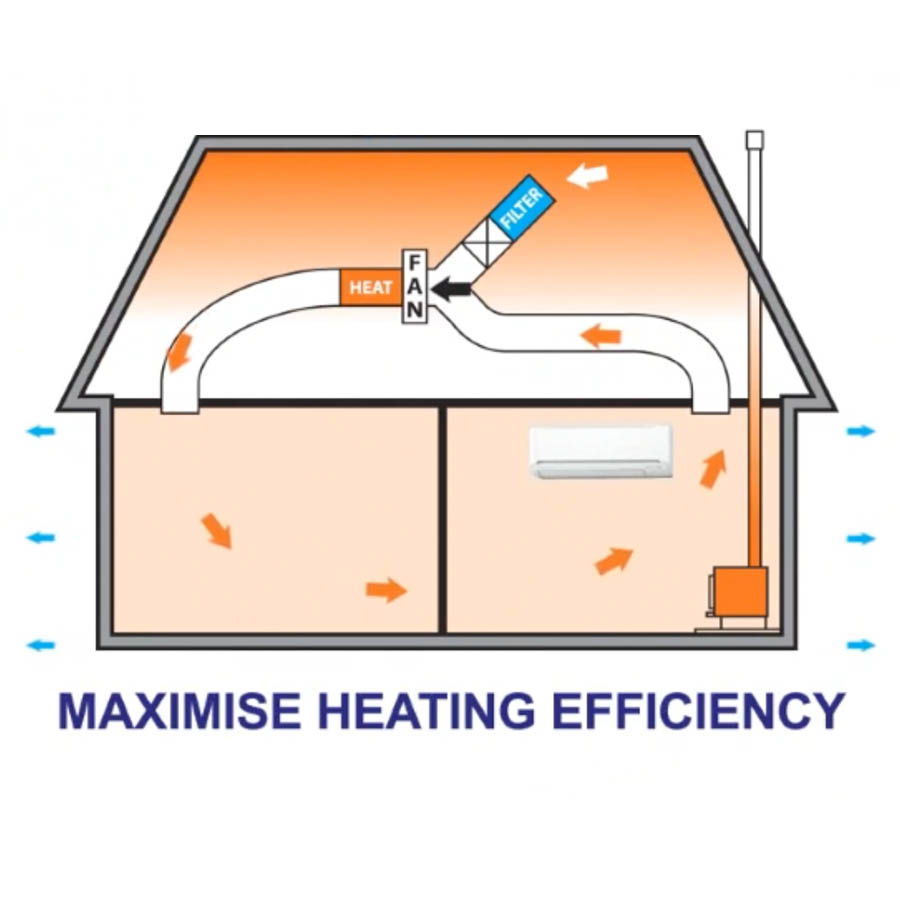A Comprehensive Overview to Picking the Right Heat Transfer Systems for Your Needs
Choosing the proper Heat transfer system is important for operational performance. Numerous systems deal with different requirements, affected by aspects such as temperature array and liquid type. Understanding the principles behind Heat transfer, such as radiation, convection, and conduction, is important. Furthermore, examining energy sources and upkeep methods can affect lasting efficiency. A closer evaluation of these considerations reveals how to customize a system to details demands. What should one prioritize in this complicated decision-making process?
Comprehending Heat Transfer: Trick Ideas and Principles
Although Heat transfer might look like a simple concept, it includes a range of principles that are basic for effective system style. Recognizing these concepts is vital for developers and engineers who aim to enhance thermal efficiency in numerous applications. Transmission, for example, includes the transfer of Heat through strong materials, while convection describes the motion of Heat within liquids. Radiation, one more crucial principle, explains just how Heat can be moved through electromagnetic waves. Each of these devices plays a vital duty in determining just how energy relocates within a system. By extensively realizing these concepts, professionals can make enlightened decisions, ensuring that Heat transfer systems run efficiently and fulfill the certain needs of their applications
Sorts Of Heat Transfer Systems: An Introduction
Recognizing the principles of Heat transfer prepares for exploring the different sorts of Heat transfer systems readily available. Heat transfer systems can be categorized largely right into three types: convection, transmission, and radiation. Transmission includes Heat transfer through strong products, counting on direct contact between particles. Convection, on the various other hand, takes place in fluids (gases and fluids) where the activity of the fluid itself facilitates Heat transfer. Radiation includes the transfer of Heat with electromagnetic waves and does not call for a medium, enabling it to occur in a vacuum. Each kind of system has distinct qualities and applications, making it essential for people and companies to very carefully evaluate their particular needs when choosing one of the most suitable Heat transfer service.
Applications of Heat Transfer Solutions in Different Industries
Heat transfer systems play a vital role throughout various sectors, influencing performance and item top quality. In commercial manufacturing procedures, they facilitate accurate temperature control, while in food and beverage handling, they guarantee security and conservation. In addition, cooling and heating and climate control systems depend heavily on efficient Heat transfer to preserve comfy settings.
Industrial Production Processes

Countless industrial manufacturing procedures depend greatly on reliable Heat transfer systems to make the most of performance and improve item high quality. In sectors such as metalworking, Heat exchangers play a crucial role in maintaining excellent temperatures during welding, casting, and creating. These systems guarantee uniform Heat distribution, which is essential for accomplishing preferred product residential or commercial properties. Similarly, in the chemical manufacturing market, Heat transfer systems facilitate precise temperature level control during responses, impacting return and security. Furthermore, in fabric production, effective Heat monitoring is necessary for coloring and ending up processes, influencing color consistency and textile top quality. By selecting proper Heat transfer technologies, producers can enhance power effectiveness and minimize operational expenses, inevitably leading to a much more affordable and lasting manufacturing environment.
Food and Drink Handling
Efficient Heat transfer systems are similarly vital in the food and beverage processing sector, where keeping perfect temperatures is critical for food security and high quality. These systems play a necessary role in procedures such as pasteurization, cooking, and sanitation, making sure that items are risk-free for intake and keep their nutritional worth. Heat exchangers, as an example, successfully transfer Heat between fluids, maximizing power usage while decreasing temperature variations. Furthermore, refrigeration systems are fundamental for expanding and preserving subject to spoiling products rack life. The choice of Heat transfer technology directly influences functional effectiveness and item integrity, making it crucial for food and beverage suppliers to pick the proper systems tailored to their certain handling needs. This careful choice inevitably adds to consumer complete satisfaction and food safety and security.

Heating And Cooling and Environment Control
While lots of industries depend on Heat transfer systems for performance, COOLING AND HEATING (Home Heating, Air Flow, and Cooling) plays a necessary duty in preserving interior climate control throughout important site numerous setups. These systems use Heat transfer principles to manage moisture, air, and temperature level quality, guaranteeing convenience and safety in residential, business, and industrial settings. Correctly made heating and cooling systems enhance energy efficiency, decrease functional costs, and reduce ecological influence. In commercial buildings, as an example, reliable environment control adds to staff member efficiency and consumer fulfillment. In commercial applications, HVAC systems help maintain excellent conditions for devices operation and item preservation. Picking the right Heat transfer system is crucial for conference particular climate control needs and attaining overall system performance.
Assessing Energy Resources for Heat Transfer Solutions
In examining power sources for Heat transfer systems, a contrast of sustainable energy alternatives and fossil fuel considerations is vital. Sustainable resources, such as solar and wind, deal sustainable options that can lower environmental impact. On the other hand, nonrenewable fuel sources remain common as a result of their well-known framework and power density, prompting a mindful evaluation of both options.
Renewable Energy Options

Fossil Gas Factors To Consider
Evaluating fossil gas factors to consider is important for the performance and sustainability of Heat transfer systems. Nonrenewable fuel sources, such as gas, oil, and coal, are conventional power sources that offer significant Heat outcome, making them popular options for industrial and property applications. Their ecological influence, including greenhouse gas discharges and resource depletion, raises issues. When picking a heat transfer system, it is essential to evaluate the availability, expense, and governing aspects connected with these fuels. Go Here Additionally, the effectiveness of fossil gas systems have to be taken into consideration, as higher effectiveness can mitigate some ecological disadvantages. Inevitably, a balanced strategy weighing performance and sustainability can direct decision-makers toward one of the most suitable Heat transfer remedy for their specific requirements.
Variables to Consider When Picking a Heat Transfer System
Choosing an ideal Heat transfer system calls for cautious factor to consider of various variables that can significantly impact performance and efficiency. One important element is the operating temperature range, which dictates the materials and layout suitable for the application. In addition, the type of fluid utilized in the system-- whether gas or fluid-- impacts Heat transfer effectiveness and compatibility. The system's dimension and capability have to align with the specific needs of the procedure to stay clear of ineffectiveness. Energy source availability is likewise important, affecting operating expense and sustainability. Moreover, the setup setting, including room constraints and access for upkeep, plays a considerable role in system selection. Regulative conformity and safety and security standards need to be taken into consideration to assure the system meets all legal requirements.
Upkeep and Effectiveness Optimization for Heat Transfer Equipments
Keeping Heat transfer systems is crucial for making certain optimal performance and durability. Regular upkeep activities, such as cleansing Heat exchangers and inspecting insulation, help prevent efficiency losses because of fouling and thermal connecting. Furthermore, keeping an eye on system criteria, including pressure and temperature level, allows for early detection of abnormalities, decreasing downtime and costly repairs. Implementing a precautionary maintenance schedule can enhance efficiency and expand the life-span of components. Moreover, updating to advanced control systems can boost operational effectiveness by adapting to varying lots and conditions. By prioritizing upkeep and performance optimization, drivers can achieve decreased power consumption, reduced operational expenses, and boosted general system reliability, inevitably resulting in far better source usage and an extra sustainable procedure.
Future Patterns in Heat Transfer Technologies
As sectors progressively prioritize sustainability and energy effectiveness, future trends in Heat transfer innovations are readied to go through significant improvements. Developments such as sophisticated products, including carbon nanotubes and nanofluids, promise improved thermal conductivity and effectiveness. In addition, the assimilation of renewable resource resources into Heat transfer systems is gaining energy, advertising green options. Smart technologies, consisting of IoT sensors, are anticipated to transform tracking and control, enabling real-time data evaluation for maximized performance. The growth of compact and modular systems will assist in easier installment and maintenance, catering to varied applications. These improvements indicate a change towards even more lasting, reliable, and versatile Heat transfer remedies, aligning with worldwide energy goals and ecological requirements.
Frequently Asked Inquiries
What Are the Environmental Influences of Heat Transfer Solutions?
The ecological effects of Heat transfer systems can consist of greenhouse gas discharges, energy consumption, and prospective thermal contamination. Additionally, incorrect disposal of products and ineffectiveness can contribute to resource exhaustion and ecosystem disturbance.
Just how Do I Calculate the Cost-Effectiveness of a Warmth Transfer System?
To calculate the cost-effectiveness of a warm transfer system, one have to analyze first expenses, operational costs, upkeep requirements, and energy effectiveness, comparing these elements versus the expected life-span and performance of the system.
Can Heat Transfer Equipment Be Used in Residential Setups?
Heat transfer systems can without a doubt be made use of in residential settings. They give reliable heating and cooling remedies, making homes extra comfortable while potentially reducing power prices. Their adaptability permits different applications in household atmospheres.
What Safety And Security Regulations Relate To Heat Transfer Systems?
Security guidelines for Heat transfer systems normally consist of standards on procedure, setup, and maintenance. Conformity with local structure codes, maker specifications, and discover this info here industry standards is important to guarantee effective and safe system efficiency in numerous applications.
Exactly How Do Various Products Affect Heat Transfer Performance?

Transmission, for instance, includes the transfer of Heat with solid products, while convection refers to the motion of Heat within fluids. Comprehending the concepts of Heat transfer lays the groundwork for discovering the numerous kinds of Heat transfer systems available. Heat exchangers, for instance, successfully transfer Heat in between fluids, optimizing power use while minimizing temperature level fluctuations. In evaluating energy resources for Heat transfer systems, a contrast of renewable power options and fossil fuel factors to consider is necessary. Steels, such as copper and light weight aluminum, conduct Heat successfully, whereas insulators like rubber and glass reduce down Heat circulation.